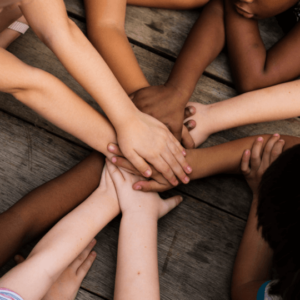Children are ever-curious, and the differences of race and diversity are sure to be noticed among them. When your children finally approach you with the discussion, or when you believe your child is old enough, you should be prepared to talk through a conversation about race in an age-appropriate way.

How Do I Talk About Skin Color?
Kids start to ask questions about race and differences in skin tone that they notice among their peers and adults early in their life. Explain that each person is unique in their skin color, hair, and more. You can start by comparing the differences in skin tone among your own family unit as an example. One in ten children in America are multiracial, so skin color is not a conversation that can be avoided in single race households.
How Do I Talk About Current Events?
Parents should be limiting kid’s screen time and monitoring their content. Images in the media are more likely to be focused on protests or riots than issues of race, which may give children the wrong impression. However, children pick up on conversations they overhear from adults, and may already be forming opinions. Ask your child what they have heard or seen, then answer their questions with facts. This conversation can be more intimidating than others, so be sure to ask your child how they are feeling and validate their emotions. Sesame Street and CNN held a combined town hall meeting for kids and families that features Elmo and his father explaining the Black Lives Matter movement and police brutality. This is a great tool for families to watch together, and becomes a great conversation starter for parents struggling to find where to start.
The ‘Talk’
Black families have always had a discussion about race and racism they are sure to experience with their children at early ages, but white families should also have a similar talk. This is a chance to talk about empathy and standing up for others as a bystander when they see injustice or something they know is unfair.
Are There Books To Help Talk About Race?
Teachers and parents alike can start to diversify their book collection with more character of color and age-appropriate explanations of race and racial bias. Adopting an anti-bias curriculum can help create “a climate of positive self and group identity development, through which every child will achieve her or his fullest potential.” Adults and children alike will enjoy the list of book recommendations for culture, racial identity, economic class, family structures, and more. Find more suggestions on children’s books addressing race at EmbraceRace, Smithsonian and Today’s Parent.
It’s important to remember not to ignore their questions or to wait until your child brings up the topic first. All children are bound to experience diversity among their peers, so the sooner they learn the better.
Explore and reflect on Core Competencies for the State of Wisconsin in regards to diversity with Honoring Difference: Diversity in Early Childhood.
